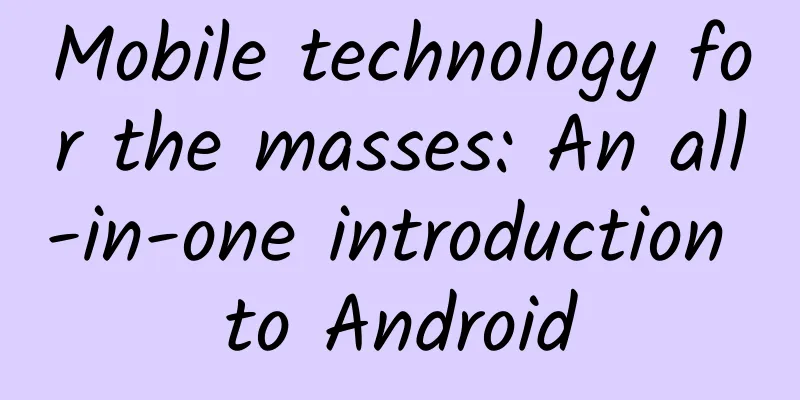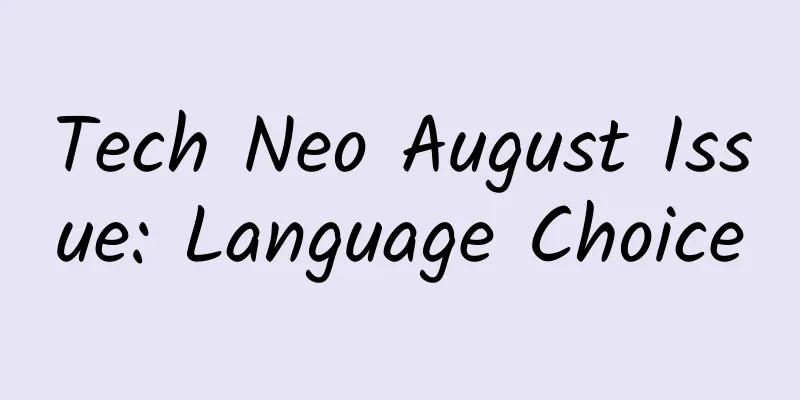The human brain has billions of neurons, so why does it only run at 10 bits per second?

|
Produced by: Science Popularization China Author: Denovo Producer: China Science Expo A recent study published in the journal Neuron explored the human brain's ability to process information quickly and found that our minds are not as fast as we think. In the computer field, a bit is the basic unit of information, used to represent a binary state (0 or 1). Through the combination of a large number of bits, computers can efficiently store and process huge amounts of data, demonstrating excellent performance. The human brain can only process 10 bits of information per second. (Image source: Document 1) This study shows that the information transmission rate of human behavior is only about 10 bits per second, while the sensory system can absorb about 10⁹ bits of information per second. This means that our peripheral nervous system is collecting sensory data in parallel at a rate of gigabits, which is several orders of magnitude higher than the paltry 10 bits that the brain ultimately outputs! This phenomenon touches on fundamental questions about brain function: What neural mechanisms limit the speed of human thought? Why can the brain, with a billion neurons, process only so little information? What is the difference between the way the human brain and computers process information? First of all, it should be made clear that the speed of human thinking discussed here actually refers to the speed of information processing, that is, the ability of the brain to understand, analyze and process information within a specific time. This is fundamentally different from the concept of computer processing data. Computer information processing is closer to quantitative storage and calculation, while human thinking involves more complex and multi-dimensional activities. The human brain is based on a network of neurons that transmit information through bioelectrical and chemical signals. It has the characteristics of nonlinear and distributed processing, and can integrate experience, emotion, and intuition to complete complex reasoning and decision-making. In contrast, computers process information based on digital circuits and binary operations using clear algorithms and programs. Although computers have advantages in logic, accuracy, and computing speed, they lack the ability to think independently and cannot make emotional connections. The difference between the two is not only reflected in their capabilities, but also reflects the difference in the fundamental "design" concepts of natural and artificial systems. How do scientists quantify the speed of human thinking? This study shows that the human brain's thinking speed is 10 bits per second. How was this specific value obtained? In order to quantify the speed at which people process information, scientists have designed various experiments to study the amount of information processed by humans when performing various tasks to estimate the speed of thinking. 1. Blind Rubik's Cube Experiment; Scientists conducted a blind Rubik's Cube experiment. Participants first had a few seconds to observe the Rubik's Cube and remember its initial state, and then tried to restore it without looking at the Rubik's Cube at all. The whole process was divided into two stages: observation stage and problem-solving stage. The researchers evaluated the participants' cognitive processing speed by recording the observation time and problem-solving time. Blind Rubik's Cube Experiment (Image source: Generated by the author using AI) The challenge of the blind Rubik's Cube experiment is to screen 4.3×1016 possible Rubik's Cube states in a very short time and extract key information to form a memory strategy. Experimental data show that the information processing speed of participants in the observation phase is about 11.8 bits/second. This shows that even in the face of complex tasks, the brain still maintains a rate of nearly 10 bits/second in the processing and memory process. This result supports the serial working mechanism of the brain in high-intensity cognitive tasks. 2. Typing task experiment; The scientists also designed a typing task experiment. Participants were required to type in English based on handwritten text. The average speed of a skilled typist is about 120 words per minute, and each word contains about 5 characters. The researchers evaluated the actual information processing rate in the typing task by calculating the total number of characters entered and the time taken. The experiment showed that when participants input meaningful English text, they would increase their input speed based on language patterns and contextual cues. However, when the experimenter asked the typists to input a random sequence of characters, the input speed dropped significantly, which just reflects the high dependence of cognitive processes on semantics and memory patterns. Although the speed of hand movements can reach a high level, the upper limit of information processing is still 10 bits/second, which shows that the cognitive bottleneck of the brain is not only limited by the speed of the motor system, but also related to the serialized information screening and processing mechanism inside the brain. This experiment highlights the importance of language pattern recognition and cognitive simplification in improving input efficiency. Information processing speed as reflected by typing (Image source: Generated by the author using AI) 3. E-sports experiment; To further verify this conclusion, the researchers turned their attention to e-sports players. Fast-paced computer games such as StarCraft are used as a tool to study the speed of human information processing because they require players to complete multiple tasks such as resource management, tactical operations and strategic decisions in a very short time. The study showed that by comparing the decision-making speed between actual operations and theoretical possible actions, it was concluded that the information processing rate of professional players is about 10 bits per second, reflecting the cognitive limit of humans in complex and high-pressure environments. StarCraft is also used as a tool to study the speed at which humans process information (Image source: Generated by the author using AI) What limits the speed at which the human brain can process information? First, there is a clear division of labor between the "external brain" and the "internal brain". The "external brain" is responsible for processing a large amount of high-dimensional sensory input, such as vision and hearing systems that receive and process information in parallel, with the amount of data transmitted per second reaching billions of bits. The "internal brain" is responsible for filtering and compressing this information, extracting only a small amount of key information related to behavior for decision-making and action. This screening process greatly limits the speed of information processing, as if the picture we see contains a lot of information, but the brain only processes a little bit of useful information. Secondly, human cognition is characterized by serial processing, that is, the brain can only focus on one task at a time. This "single-threaded" operation mode leads to a bottleneck in behavioral speed. For example, when facing two tasks at the same time, the processing of the second task must wait until the first task is completed before it can proceed. The brain can only focus on one task at a time (Image source: Generated by the author using AI) Although the brain's higher cognitive areas (such as the prefrontal cortex) contain billions of neurons, their main task is to integrate sensory input, memory, emotions, and goals into low-dimensional behavioral decisions. This complex integration and coordination process takes time, limiting the speed of behavioral responses. In addition, the complexity of synaptic transmission and neural networks also limits the speed. Although the transmission speed of a single neuron is relatively fast, the nerve signal needs to be transmitted layer by layer through multiple neurons and synapses, rather than being completed directly at one time. At the same time, the brain will prioritize the accuracy and flexibility of behavior rather than speed. This is an evolutionary adaptive design aimed at improving survival in a specific environment. Finally, although selective attention and filtering mechanisms can effectively save cognitive resources, they also cause a large amount of sensory information to be discarded, further limiting the speed of behavioral output. This design is to cope with information overload in complex environments, but at the cost of the brain's reaction speed being much lower than the processing capacity of sensory input. These mechanisms work together to produce an output rate of only about 10 bits per second for human behavior, in stark contrast to the input rate of the sensory system and revealing the brain’s design priorities. Summarize The huge discrepancy between sensory input and the speed at which the brain processes it remains a major mystery in the scientific field. Although the human brain can capture a wealth of external information, occasionally demonstrates excellent memory capabilities, and can even process some information unconsciously, its actual operating speed is extremely slow. The information processing speed of 10 bits per second undoubtedly sets an upper limit for cognitive ability. So, can we break through this "bottleneck" in the future? Taking brain-computer interfaces as an example, scientists are working to establish an efficient direct communication channel between the human brain and computers, hoping to achieve fast and seamless information exchange. However, if the physiological limits of the brain do exist, then even the most advanced technology will find it difficult to break through this basic constraint. Just like connecting a device with limited hardware performance to an ultra-high-speed network, external upgrades cannot change its internal processing speed. However, this does not mean that our research should stagnate. On the contrary, this challenge reminds us that in the future we need to study the structure and working mechanism of the brain more deeply and explore potential ways to improve cognitive efficiency. References: 1.Zheng, Jieyu, and Markus Meister. "The unbearable slowness of being: Why do we live at 10 bits/s?." Neuron (2024). 2.Dhakal, Vivek, et al. "Observations on typing from 136 million keystrokes." Proceedings of the 2018 CHI conference on human factors in computing systems. 2018. 3. Vinyals, Oriol, et al. "Starcraft ii: A new challenge for reinforcement learning." arXiv preprint arXiv:1708.04782 (2017). Editor's note: In order to understand the latest developments in cutting-edge science and technology, the China Science Popularization Frontier Science Project has launched a series of articles titled "Understanding Top Science Journals", which selects outstanding papers from authoritative journals and interprets them in plain language as soon as possible. Let us broaden our scientific horizons and enjoy the fun of science through the window of top journals. |
>>: What kind of rice is the "rice" in Travel Companion's "self-heating rice"?
Recommend
Brand Retail Private Domain Solutions
Precision marketing based on big data is really s...
Baidu search CPC/eCPC/oCPC in one article
When promoting, many students often cannot distin...
Be careful if you have these items at home! They can cause serious injuries!
Source: Dr. Curious...
From "medical inspirer" to "garbage terminator", earthworms are familiar yet unfamiliar to you
In spring, earthworms begin to stir. Speaking of ...
Android uses ViewStub to improve layout performance
[[171874]] In Android development, View is a tech...
Real-time "error correction" for quantum computers! Why don't you go to space, AI?
Quantum computers have the potential to revolutio...
The United States investigates Tesla cars. Car accident analysis shows that automatic driving has hidden dangers and cannot recognize lights
Tesla is one of the most well-known autonomous dr...
How do wind turbines generate electricity when their blades are so thin?
The weather is getting colder and colder, and the...
Detailed explanation of the three major issues of user activity, retention, and loss
Before solving a problem, do you want to understa...
AndroidManifest file introduction and merge conflict rules
Introduction to AndroidManifest File AndroidManif...
What is the core of what Liu Genghong said? Don’t wait until you get hurt to understand!
Mixed Knowledge Specially designed to cure confus...
How to estimate the expected effect of a product solution before designing it?
Before starting to work on new product plans or i...
Whether a mosquito bites you has nothing to do with your blood type, but...
References [1] Li, X., & Rossignol, PA (1992)...
Don’t take triglycerides lightly; high levels can be fatal!
《Cotton Swab Medical Science Popularization》 Xu S...
Discover the value of ACG creation. Who will be the ACG IP incubator?
The copyright dispute of "Legend of Miyue&qu...









